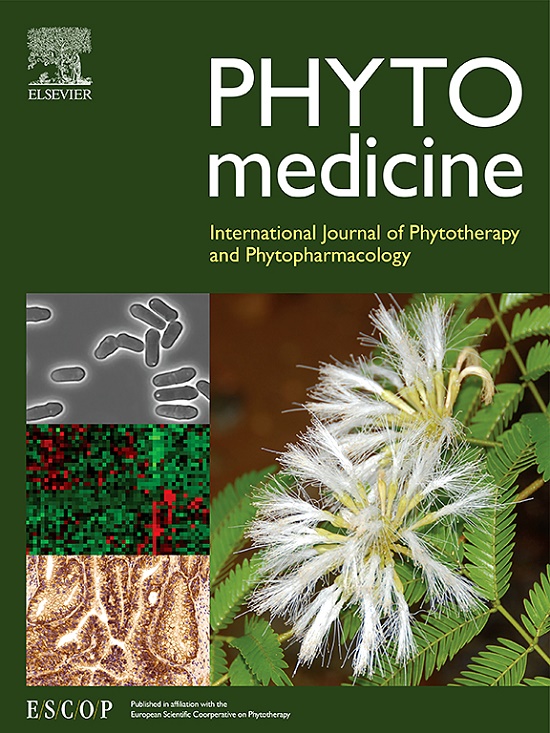Regulation of inflammatory responses: Harnessing the Ruan Mai Jian targeting of EphA2/ephrinA1 pathway to enhance atherosclerosis amelioration
IF 6.7
1区 医学
Q1 CHEMISTRY, MEDICINAL
引用次数: 0
Abstract
Background
Atherosclerosis is a major contributor to global cardiovascular morbidity and mortality, driven by the chronic inflammatory proliferation of vascular smooth muscle cells (VSMCs), which destabilizes atherosclerotic plaques. The EphA2/ephrinA1 signaling pathway plays a critical role in modulating VSMC inflammatory responses, making it an attractive therapeutic target. However, the clinical application of EphA2 inhibitors remains limited due to safety concerns. Ruan Mai Jian (RMJ), a traditional Chinese herbal medicine, has demonstrated potential efficacy in treating atherosclerosis, though its precise mechanisms remain insufficiently characterized. To date, no study has investigated a Chinese medicine compound capable of regulating atherosclerotic inflammatory responses via the EphA2/ephrinA1 pathway. This study aims to determine whether RMJ treats atherosclerosis both in vivo and in vitro by modulating the EphA2/ephrinA1 pathway, while evaluating its potential hepatic and renal toxicity.
Study Design
A combination of in vivo (ApoE-/- murine model) and in vitro studies was employed to investigate the effects of RMJ on atherosclerotic progression, inflammatory markers, and VSMC function.
Methods
ApoE-/- mice were fed a high-fat diet to induce atherosclerosis and subsequently treated with RMJ at varying doses. Serum lipid levels, inflammatory cytokines (TNF-α, IL-6, IL-1β), and plaque morphology were analyzed. Immunohistochemical and Western blot analyses were performed to assess the modulation of the EphA2/ephrinA1 pathway. VSMC proliferation and migration assays were conducted to evaluate the effects of RMJ on cellular behavior in vitro.
Results
RMJ treatment significantly attenuated serum lipid levels, reduced systemic inflammation, and stabilized atherosclerotic plaques by increasing collagen content and decreasing lipid deposition. RMJ downregulated EphA2 expression and upregulated ephrinA1, effectively inhibiting VSMC proliferation and migration through suppression of the AKT1/ERK1/2 signaling cascade. Importantly, no hepatic or renal toxicity was observed in treated mice, indicating a favorable safety profile.
Conclusion
RMJ demonstrates significant therapeutic potential for the treatment of atherosclerosis, primarily through modulation of the EphA2/ephrinA1 signaling pathway, resulting in reduced inflammation and VSMC proliferation. Its efficacy, combined with the absence of hepatotoxicity or nephrotoxicity, highlights RMJ as a promising candidate for further investigation as a novel therapeutic agent for atherosclerotic cardiovascular disease.

求助全文
约1分钟内获得全文
求助全文
来源期刊

Phytomedicine
医学-药学
CiteScore
10.30
自引率
5.10%
发文量
670
审稿时长
91 days
期刊介绍:
Phytomedicine is a therapy-oriented journal that publishes innovative studies on the efficacy, safety, quality, and mechanisms of action of specified plant extracts, phytopharmaceuticals, and their isolated constituents. This includes clinical, pharmacological, pharmacokinetic, and toxicological studies of herbal medicinal products, preparations, and purified compounds with defined and consistent quality, ensuring reproducible pharmacological activity. Founded in 1994, Phytomedicine aims to focus and stimulate research in this field and establish internationally accepted scientific standards for pharmacological studies, proof of clinical efficacy, and safety of phytomedicines.
 求助内容:
求助内容: 应助结果提醒方式:
应助结果提醒方式:


